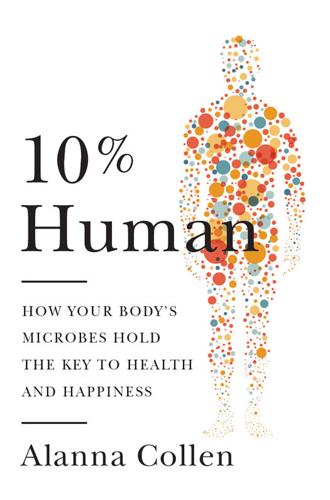
10% Human: How Your Body's Microbes Hold the Key to Health and Happiness
by
Alanna Collen
Published 4 May 2015
Somehow, he thought, these infections in the early years of a child’s life carried with them protection from hay fever and other allergies. Quickly dubbed the ‘hygiene hypothesis’, Strachan’s idea was supported by the fact that the rise in allergies was matched by improvements in hygiene standards over time. A weekly wash before church in a lukewarm bath became a daily shower in steaming hot water. Food was refrigerated or frozen rather than pickled and fermented. Family sizes were shrinking, and life was becoming more and more urban and refined. The hygiene hypothesis just made sense, especially as in developing countries with high rates of infectious disease, allergies were still rare.
…
Members of the microbiota even have the same type of give-away molecules coating their surfaces that the immune system uses to detect pathogens. But something about these microbes tells the immune system not to attack. David Strachan’s original hygiene hypothesis was an excellent one, but it now faces an overhaul. He suggested that more infections in childhood meant a lower chance of allergies. The trouble is, the evidence doesn’t support the idea, and the mechanisms don’t quite work. But in some sense the rethink the hygiene hypothesis is undergoing is a subtle one. Although it does not cause disease, the microbiota is, in some sense, a vast infection. These microbes are intruders, but they have been intruding for such a long time, and they bring such great benefit, that the immune system has learnt to accommodate them.
…
Of course, taking antibiotics is all about ridding the body of infection, so the hygiene hypothesis stands up in light of the link between them and allergies. But the paradox remains: why would the immune system attack harmless allergens in preference to the apparently more alarming threat from the body’s microbes? And if the rise in allergies were connected to the drop in infections, why wouldn’t those of us who had had fewer infections be the ones who had more allergies? Professor Agnes Wold of the University of Gothenburg in Sweden was the first to provide an alternative to the hygiene hypothesis, in 1998. Research into the importance of the microbiota was just beginning to pick up steam, and the lack of correlation between infections and allergy had started to challenge Strachan’s idea.
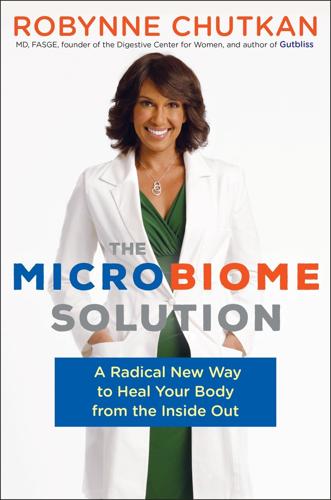
The Microbiome Solution
by
Robynne Chutkan M.D.
Published 5 Aug 2015
Contents Title Page Copyright Dedication Epigraph Acknowledgments Introduction: Live Dirty, Eat Clean part 1 • Getting to Know Your Gut Bacteria Chapter 1. The Zoo Inside You Chapter 2. Microbes: Your Worker Bees part 2 • Messing Up the Microbiome Chapter 3. The Hygiene Hypothesis and Our Modern Plagues Chapter 4. Pharmageddon and the Antibiotic Paradox Chapter 5. Dysbiosis—Do You Have It? Chapter 6. Are Our Bacteria Making Us Fat? Chapter 7. Modern Microbial Disruptors part 3 • Rewilding Ourselves Chapter 8. Introducing the Live Dirty, Eat Clean Plan Chapter 9.
…
Being aware of the interlopers and inclement conditions that will reduce your victory garden to an overgrown or blighted plot is key. In the next part of this book we’ll explore in detail how the microbiome gets messed up, and what you can do to preserve yours. part 2 MESSING UP THE MICROBIOME CHAPTER 3 |||||||||||||||||||||||||||||||||||||||||| The Hygiene Hypothesis and Our Modern Plagues MANY OF US were brought up to believe that it’s better to be clean than dirty. But evidence is mounting to show that if you start from that premise, you will arrive at the wrong destination as far as human health is concerned. The microbial communities established in our bodies at birth, during infancy, and in early childhood mold our health as we grow and help determine whether or not we develop illness.
…
Almost a century later, we still don’t know what causes autoimmune illnesses such as Crohn’s, although there’s been lots of speculation—from infections like measles, E. coli, and enterovirus to lifestyle factors like smoking and stress to common and seemingly benign practices like the use of toothpaste and refrigeration. In keeping with Dr. Crohn’s initial theory, emerging evidence suggests that bacteria do indeed play a major role, but it may be their absence rather than their presence that leads to the diagnosis. The Hygiene Hypothesis In the late 1950s, Professor David Strachan, a lecturer at the London School of Hygiene and Tropical Medicine, embarked on an epidemiological study of hay fever and eczema in British children. These diseases had been steadily increasing since the turn of the century when large populations left the farm for the factory.
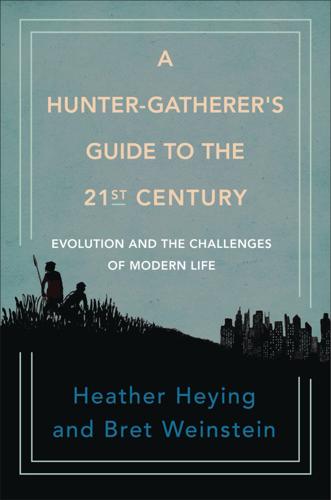
A Hunter-Gatherer's Guide to the 21st Century: Evolution and the Challenges of Modern Life
by
Heather Heying
and
Bret Weinstein
Published 14 Sep 2021
So, too, are many allergies and autoimmune disorders, for which there is solid, and growing, evidence to support the “hygiene hypothesis.” The hygiene hypothesis posits that because we live in ever-cleaner surroundings, and are therefore exposed to ever fewer microorganisms, our immune systems are inadequately prepared, and so develop regulatory problems, such as allergies, autoimmune disorders, and perhaps even some cancers.17 Our immune systems are not functioning as they evolved to do, suggests the hygiene hypothesis, because we have cleansed our environments too thoroughly. Our appendix seems likely to have suffered the same fate as our immune systems.
…
Laurin, Everett, and Parker, The cecal appendix, 569. 16. Bickler, S. W., and DeMaio, A., 2008. Western diseases: Current concepts and implications for pediatric surgery research and practice. Pediatric Surgery International, 24(3): 251–255. 17. Rook, G. A., 2009. Review series on helminths, immune modulation and the hygiene hypothesis: The broader implications of the hygiene hypothesis. Immunology, 126(1): 3–11. 18. Chesterton, G. K., 1929. “The Drift from Domesticity.” In The Thing. Aeterna Press. 19. The adaptive landscapes metaphor is often described as ranges of mountain peaks and valleys, but it is easier to understand their evolutionary implications if we consider a transparent sheet of ice on the surface of a pond.
…
See fourth frontier geographic frontiers, 224–25, 226 growth and, 224–27 technological frontiers, 224, 225–26 transfer of resource frontiers, 224, 225, 226 Hobbes, Thomas, 33 hobbits of Flores island, 35 Homo/Homo sapiens, xiv–xv, 32–38 homosexuality, 136 honey, 79–80 horses, 138 how (proximate) questions, 68 Huaorani, 225 Huichol people, 220 human niche, 1–19 adaptive evolution and, 11–14 campfire and, 4, 6–9 consciousness and, 7–9 exchange of ideas and, 4, 6–7 generalists versus specialists and, 5–6, 7, 11 human nature, understanding, 5–6 innovation and, 4 lineage and, 12–13 niche switching as, 10–11, 35–36, 138, 211 Omega principle and, 14–17 oscillation between culture and consciousness and, 9–11 populating New World, 2–4 human paradox, 5–6 humor, 202–3 hunger, 52 hunter-gatherers, xv, 35–36, 80, 113–14 hyenas, 150 hygiene hypothesis, 47 hyper-novelty, xii adulthood and, 189–90 cognitive dissonance spawned by, xii and COVID-19 pandemic, 249 diet and, 77, 79 intuitive sense of fitness value of behaviors and, 204 medicine and, 61, 67, 71–72 olfactory perception and, 57 parenting and, 136–39 sleep disruption and, 98–101 visual perception and, 40 Inca Empire, 225 Indian Deccan Traps, 29 individual consciousness, 8 indri, 60 infanticide, 13 innovation, 4, 5, 171, 209–222 insects, 22, 25, 109, 110, 238 intellectual self-reliance, 178–79 intellectual tools, 177 Inuit, 9–10, 78, 148 jacanas, 111, 112, 126 jackdaws, 131 jaws, 23 jays, 147 jealousy, 116–17, 120, 130 Jefferson, Thomas, 239 justice/freedom trade-off, 232–33 Kenyan children, 151, 152 killer whales, 142, 147 Komodo dragons, 109 !
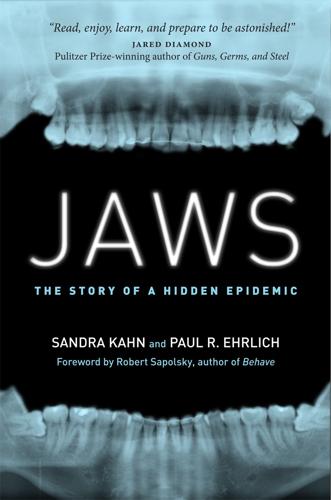
Jaws
by
Sandra Kahn,Paul R. Ehrlich
Published 15 Jan 2018
Lauener, and E. von Mutius. 2006. The many faces of the hygiene hypothesis. Journal of Allergy and Clinical Immunology 117: 969–977. 33. S. A. S. Moimaz, A. J. Í. Garbin, A. M. C. Lima, L. F. Lolli, O. Saliba, and C. A. S. Garbin. 2014. Longitudinal study of habits leading to malocclusion development in childhood. BMC Oral Health 14: 96. 34. D, W, Sellen. 2007. Evolution of infant and young child feeding: Implications for contemporary public health. Annu. Rev. Nutr. 27: 123–148. 35. A. Patki. 2007. Eat dirt and avoid atopy: The hygiene hypothesis revisited. Indian Journal of Dermatology, Venereology, and Leprology 73: 2. 36.
…
This shift and the accompanying exposure to allergens, like learning to grow and process softer foods, is another aspect of humanity’s distant history that makes kids today more likely to have allergies and to develop jaw problems.29 When babies are born they usually breathe through their noses except when they are crying; some cannot breathe through their mouths even when it is appropriate—newborns with rare congenital blockage of the nose may suffocate rather than breathe through their mouths.30 Blockage of the nose at an early age is frequently due not just to regular colds but, according to the “hygiene hypothesis,” also due to living in enclosed, allergen-rich spaces,31 while not having immune systems well “trained” by close contact with farm animals, infections, and “dirt” early in life.32 It seems ironic, but the modern “clean” environment33 seems to have deleterious effects on the immune system’s ability34 to prevent allergic attacks and asthma on the one hand35 and on the other to concentrate allergens indoors (such as dust mites and their feces) and generate novel ones (like formaldehyde).36 That modern environment might possibly include comparatively little breastfeeding,37 which can pass immune protective effect from mother to infant.
…
See also Orthotropics Friedman, Jay W., 27 Gaming, 153 Gelb, Mike, 86 Gene-environment interactions, 19–20, 123, 130 Gerbil, 66 Germ theory, 141 Giesting, Chris, 101 Gingivitis, 74 Gokhale, Esther, 92 GOPex program, 103–107, 104, 107, 134–135, 149–150, 182n29 Gozal, David, 80, 82 Great Leap Forward, 39, 48, 60 Growth, 70, 78 Guilleminault, Christian, 80, 99 Gum chewing, 107–108 Gum disease, 32, 74 Gummy smiles, 7, 7, 114, 114 Habits, relating to oral-facial health, 1, 10–11, 13, 42–43, 46, 55–56, 92 Hang, Bill, 80 Harvold, Egil, 64–65, 74 Heart disease, 7–8 Heimlich, Henry Judah, and Heimlich maneuver, 61 Herbst oral appliance, 125 Homeoblock oral appliance, 109, 135 Honey, 31 Huggins, Hal A., 17 Hunter-gatherers: jaw structure and oral-facial health of, 6, 6, 9, 19, 24–25, 25; snoring of, 16; time devoted to work by, 95–96; tooth wear of, 9 Hygiene hypothesis, 65 Identical twin studies, 130–131, 130, 131, 142 Immune system, 66 Indigenous peoples: oral-facial health of, 31–33, 32, 33; posture of, 92–93, 93. See also Australian Aborigines, oral-facial health of; Native Americans, health of Indoor living, 44–45, 65–66, 99 Industrialization. See Modern/industrial environment Information transfer.
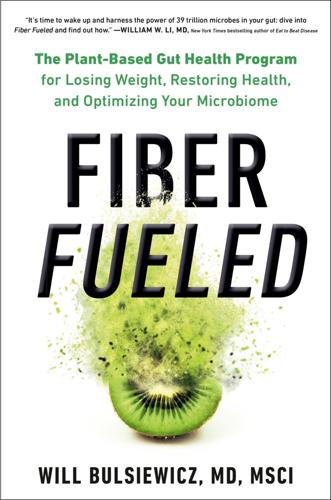
Fiber Fueled: The Plant-Based Gut Health Program for Losing Weight, Restoring Your Health, and Optimizing Your Microbiome
by
Will Bulsiewicz
Published 15 Dec 2020
SYMPTOMS ASSOCIATED WITH DAMAGE TO THE GUT MICROBIOTA (DYSBIOSIS) INTESTINAL EXTRAINTESTINAL Abdominal pain or cramping Gas Bloating/abdominal distension Food sensitivities Food allergies Diarrhea Constipation Mucus in stool Nausea Indigestion Heartburn/reflux Belching Weight gain Fatigue Brain fog Difficulty concentrating Mood imbalance Anxiousness Skin breakouts Joint pains or muscle aches Weakness Bad breath Sinus congestion Shortness of breath/wheezing Insights into the immune system from a toddler’s diaper While most of us are stunned by the emergence of human waste as actual medicine, someone who would probably not be so surprised by this revelation is Professor David Strachan, an epidemiologist at the London School of Hygiene and Tropical Medicine. In 1989 Strachan proposed the hygiene hypothesis upon observing that infants born into a household with more siblings were less susceptible to eczema and allergic rhinitis. You may have heard of his hypothesis—it’s the theory that excessive cleanliness is behind the explosion of allergic and autoimmune disease. It’s why some families encourage their kids to play in the dirt to benefit their immunity!
…
Unlike the lush habitats in nature, our man-made structures are a microbial badland that fails to contribute to your microbial diversity. No surprise, moving from a rural environment to the city has been associated with the loss of beneficial microbes and an increase in dangerous genes. Conceptually this goes back to the hygiene hypothesis discussed in Chapter 1. Exposure to the outdoors early in life has been shown to improve immune function. Adults who exercise outdoors have more diverse microbiomes. Gardening improves mood, lowers stress, increases life satisfaction, and even promotes weight loss. Not to mention that growing your own veggies has been shown to make you enjoy eating them even more!
…
abdominal distension, 13 abdominal pain/cramping, 13, 30, 59, 78 acacia powder supplements, 139 acid reflux, 30 adaptation of gut to foods, 101–2 African Americans, 69 Africans, 68–69 Aggregate Nutrient Density Index (ANDI) score, 156 agriculture, 75 alcohol, 189, 189–90 alcoholic cirrhosis, 19 alcoholic hepatitis, 9, 19, 42 alcoholic steatohepatitis, 19 allergic diseases, 14–15, 16, 37, 60 allergic rhinitis, 13, 14 allium vegetables, 160–62 allyl sulfides, 81 almonds, 220 Alzheimer’s disease and allium vegetables, 162 and bacterial endotoxins, 9, 42 and dysbiosis in gut microbiota, 23 and Fiber Fueled program, xvi role of lifestyle in, 31 SCFAs’ impact on, 68 and sulforaphane in cruciferous vegetables, 164 and telomere length, xvii American Gut Project, 73, 74 ANCA-associated vasculitis, 16 androgens (testosterone), 20–21, 42 animal foods and cancer, 44, 102 digestibility of, 104 and elimination progression, 184 fad diets emphasizing, 45–47 impact on gut microbiome, 43–47 including small amounts of, 183–84 percentage of, in SAD, 38 and saturated fats, 43 and short-chain fatty acids, 102, 104 and weight loss, 46 See also dairy; meat animal models used in research, 40, 42 animals, exposure to, 198 ankylosing spondylitis, 16 anorexia nervosa, xxvi anthocyanins, 81, 154 antibacterial soaps, 33 antibiotics, 32, 33, 37, 41, 89, 143–44 antioxidants, 78, 80, 81, 187, 188 antiphospholipid syndrome, 16 anxiety/anxiousness, 13, 23, 30, 164 appetite, 19, 23, 66, 195 apples, 56, 79–80 archaea, 5 aromatics (onions, garlic), 160–62, 185 arthritis, 110 artificial sweeteners, 38, 40–41, 113 arugula Arugula-Lemon Pesto, 338–39 Arugula-Walnut Pesto, 240 benefits of, 157 asparagus, 81 asthma, 14, 15, 16, 79, 80 astringents, 33 atherosclerosis, 67 atrial fibrillation, 44 attention deficit hyperactivity disorder (ADHD), 23, 68 autism, 23 autoimmune diseases associated with dysbiosis, 14–15, 16 and bacterial endotoxins, 9, 42 and Fiber Fueled program, xvi and gluten, 85–86 and gut-immune relationship, 14 and hygiene hypothesis, 13 in industrialized vs. agricultural nations, 14–15 as overreaction of immune system, 60 plant-based diets’ impact on, 62–63 prevalence of, 30 and salt, 39 and sulforaphane in cruciferous vegetables, 164 and T cells, 61 avocados, 81 Back-Pocket Stir-Fry, 242–43 Bacterial cloud, 198 bacterial endotoxins and alcohol consumption, 189 butyrate’s reduction of, 60 and healthy fats, 43 and high-fat diets, 42 and inflammation, 9, 19, 60 and intestinal permeability, 59 and legumes, 89 and prebiotic supplements, 138 and saturated fats, 43 SCFAs’ mitigation of, 61, 67 and sulforaphane in cruciferous vegetables, 164, 165 and testosterone declines, 21 bad breath, 13 balance, loss of, 109 Banana Baked Oatmeal, 320–21 bananas, 91 barley, 78, 85, 111, 113 basil, 160 beans, 113.

Viruses: A Very Short Introduction (Very Short Introductions)
by
Crawford, Dorothy H.
Published 27 Jul 2011
Other human viruses on the list for worldwide eradication include measles, rubella, around 5,000 to 10,000 years ago, re0Smumps, rabies, and HBV. To vaccinate or not to vaccinate? The ethical debate surrounding the use of smallpox vaccination in Jenner’s time has moved on but certainly not disappeared. There are still religious sects who refuse vaccination, but other major issues have now come to the fore. One of these is the ‘hygiene hypothesis’ invoked to explain the recent rise in autoimmune and allergic diseases in Western countries. Both these types of disease are caused by an imbalance in the immune response. The hygiene theory attributes this to a lack of childhood infections resulting from vaccinations as well as rising standards of hygiene and antibiotic use in the modern world.
…
highly active antiretroviral therapy (HAART): combination drug therapy used to treat HIV, infection. human immunodeficiency viruses (HIVs): a group of retroviruses, that cause AIDS. To date, humans have been infected with HIV-1 strains M, N, O, P, and HIV-2, all of which were acquired from African primates. hygiene hypothesis: the theory that a lack of exposure to Q3 virusle c infectious agents during childhood predisposes to allergic and autoimmune diseases. immunological memory: the ability of the immune system to ‘remember’ previous exposure to an infectious organism and prevent further attacks. Mediated by memory T cells.
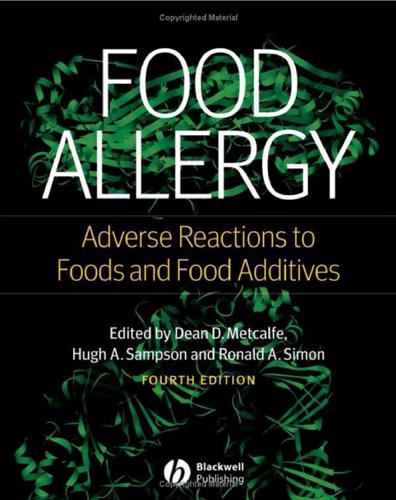
Food Allergy: Adverse Reactions to Foods and Food Additives
by
Dean D. Metcalfe
Published 15 Dec 2008
Another category of environmental factors that show overwhelming inverse association with atopy are infections, vaccinations, absence of antibiotic treatment, traditional farming environments, older siblings, day care attendance, and pet ownership [60–62]. These findings lead to the “hygiene hypothesis” which proposes that reduced exposure to particular microbiological stimuli [63], which decrease with improved living standards and higher personal hygiene, might result in an increased risk of developing allergy. Indeed, perinatal treatment (mothers prenatal and infants 6-month postnatal) with the probiotic Lacobacillus GG strain significantly reduced the development of allergies up to the age of 4 years [64]. Although the “hygiene hypothesis” is widely accepted, the underlying mechanisms are controversial. In particular, the molecular link between environmental stimuli and immune hyperresponsiveness is far from being understood.
…
Association between exposure to farming, allergies and genetic variation in CARD4/NOD1. Allergy 2006;61:1117–24. 77 Gilfillan AM, Tkaczyk C. Integrated signalling pathways for mast-cell activation. Nat Rev Immunol 2006;6:218–30. 60 Vercelli D. Mechanisms of the hygiene hypothesis – molecular and otherwise. Curr Opin Immunol 2006;18:733–7. 61 Yazdanbakhsh M, Kremsner PG, van RR. Allergy, parasites, and the hygiene hypothesis. Science 2002;296:490–4. 62 de MG, Janssen NA, Brunekreef B. Early childhood environment related to microbial exposure and the occurrence of atopic disease at school age. Allergy 2005;60:619–25. 63 Mazmanian SK, Liu CH, Tzianabos AO, Kasper DL.
…
Although subcutaneous immunotherapy has been successful in treating allergic rhinitis, it has, unfortunately, resulted in increased adverse systemic reactions and has proven unacceptable for the treatment of food allergy [5,6]. However, in the advent of the “hygiene hypothesis,” there have been various novel approaches to the treatment Food Allergy: Adverse Reactions to Foods and Food Additives, 4th edition Edited by Dean D. Metcalfe, Hugh A. Sampson, and Ronald A. Simon © 2008 Blackwell Publishing, ISBN: 978-1-405-15129-0 of atopic disorders. The “hygiene hypothesis” postulates that increased hygiene and the lack of immunostimulatory pathogens early in childhood have resulted in a skewing of the Th1 and Th2 response [7].
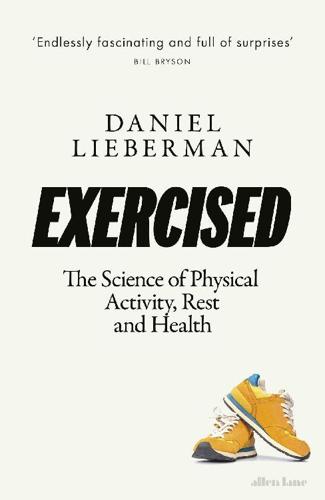
Exercised: The Science of Physical Activity, Rest and Health
by
Daniel Lieberman
Published 2 Sep 2020
Although Westerners who carry the two copies of a gene called ApoE4 (a protein that transports fats in the bloodstream) are three to fifteen times more likely to get Alzheimer’s in old age, elderly Tsimane with the same ApoE4 gene are less likely to show declines in cognitive performance if they suffer from many infections.108 Alzheimer’s may thus be an example of an evolutionary phenomenon called the hygiene hypothesis. According to this idea, ApoE4, which can be expressed by cells in the brain, might have evolved long ago to help protect the brain when infectious diseases were ubiquitous. Those of us today who live in bizarrely sterile environments without many germs and worms, face an increased chance that these formerly protective immune mechanisms turn against us. (The hygiene hypothesis also helps explain increased rates of allergies and many other autoimmune diseases.109) How Does Physical Activity Help?
…
ApoE4, by the way, is a gene involved in cholesterol synthesis in the liver, but it appears to affect cholesterol-rich plaque formation in the brain as well. For a review, see Carter, D. B. (2005), The interaction of amyloid-ß with ApoE, Subcellular Biochemistry 38:255–72. 109 For more information, see Rook, G. A. W. (2019), The Hygiene Hypothesis and Darwinian Medicine (Basel: Birkhäuser). 110 Stojanoski, B., et al. (2018), Targeted training: Converging evidence against the transferable benefits of online brain training on cognitive function, Neuropsychologia 117:541; National Academies of Sciences, Engineering, and Medicine (2017), Preventing Cognitive Decline and Dementia: A Way Forward (Washington, D.C.: National Academies Press). 111 Hamer, M., and Chida, Y. (2009), Physical activity and risk of neurodegenerative disease: A systematic review of prospective evidence, Psychological Medicine 39:3–11. 112 Buchman, A.
…
Department of (HHS), 262, 283–4, 284, 297 healthy mind in a healthy body, 331, 415n122 heart: damage from too much exercise, xvi, 288–90, 403nn23–24 running, heart adaptations for, 208–9, 314 heart attacks, 244, 288, 289, 298–9, 308, 309–10, 314, 408–9n48 heart disease: genetic factors related to, 250 inflammation role in, 60 medical care advances treatment of, 249 physical activity reducing risk for, 24, 66, 69, 263–4, 272, 288–90, 300, 403n24 resistance training benefits for prevention of, 137 sleep deprivation and, 92 heart rate: activity levels based on, 57–8, 351n27 aerobic exercise and elevation of, 292 maximum heart rate and formula to calculate, 57–8, 284, 292, 351n27, 404n34 resting pulse rate, 290 Henrich, Joseph, 218 hepatitis, 315 Hewes, Gordon, 53 high-intensity interval training (HIIT), 116–19, 294–6, 297, 308, 367–8n50, 368n53 Hippocrates, 225–6, 249 HIV, 315 Hobbes, Thomas, 145, 146, 149 Hoffman, Jenny, 105–6 homeostatic system, 90–1 Homer, 164–5 Homo genus, 151–4 Homo erectus, 151–2, 159, 160, 202–3 Homo sapiens, 152–4, 153 honeyguide birds, 172 Hoover, Herbert, 291 Hoover-ball, 291 hoplology, 155, 377n43 hormesis, 241, 395n47 horses: distance running by, 205 head stabilization while running, 202, 209, 387n23 humans running against, 200–3, 204–9, 204, 207 research on and running against, xiv running mechanism of, 203–9, 204, 207, 385n5 speed of running, 204–5, 204, 386n7 stride length, stride rate, and speed of, 206, 207 sweating and evaporative cooling of, 208 hunter-gatherers: aging, muscle loss, and strength of, 127, 136 blood pressure of, 310 cooperation and survival of, 151–2, 154 endurance and speed of, 117 energy allocation and activity-inactivity trade-offs, 40–1 energy budget of, 44–6 group activities of, 266–7 Homo erectus, 151–2 intergenerational sharing and physical activity of elderly, 230–4, 250 lack of furniture of, 53, 349n10 lack of running training by, 220–1 life expectancy of, 230, 392n16 mortality-morbidity relationship, 246 PAL (physical activity level) of, 19, 43–4, 347n21 physical activity for daily life of, xii, 13, 14–18, 28, 44, 58, 117, 191–2, 231–4, 294 power scavenging, persistence hunting, and adaptations for running, 210–13, 388n32, 388–9n37 reproduction strategy and energy budget of, 44–6, 229–30 sitting by, 16–17, 16, 18, 51, 57, 69 sleep duration and patterns of, 81–2, 83, 359n27, 359n29, 360n36 strength of, 124–7, 369n13 violence and aggression of, 147–8, 374–5n16 walking by, 171–4, 182, 380n2 walking while carrying something by, 183–4, 184 women running and hunting, 213, 388–9n37 Hunters, The, 294, 296 hunting: participation in instead of fighting, 142 persistence hunting, 211–12, 388n32 as proactive aggression, 146–7 standing upright and abilities for, 149 throwing capabilities and biomechanics, 158–61, 159 tool making and use for, 157–8 weapons invention and efficiency of, 161–2, 211 Huntington’s disease, 394n39 hyenas, 77, 98, 99, 101, 102, 106, 109–10 hygiene hypothesis, 329, 353n43 hypertension, 300, 310–11, 312, 313 hysterical strength, 132–3 Iliad, The (Homer), 164–5 immune system: aging and function of, 236–7, 316 cancer, physical activity, and, 327–8 energy costs of, 316, 320 exercise and stimulation of, 294, 315, 316, 317–20, 409n58 extreme levels of exercise and suppression of, 287–8, 316, 402n18 hygiene level of environment and inflammatory response, 329, 353n43 normal function of, 59 response to pathogens by, 316 sitting-related inflammation, 58–66, 67, 71, 353n43 triathlons and function of, 318–19 inactivity/physical inactivity: defense of and praise for, 46–8 energy allocation and activity-inactivity trade-offs, 37–41, 40 energy costs of, 29–33, 346n8 environmental and genetic factors related to, 261, 398n7 evolution for activity and inactivity, xiv, 40–6, 51, 299–300 health and physical inactivity, 23, 299 not exercising enough as lazy, xv resting as not just inactivity, 37 Sabbath laws and day of rest, 27–8, 47 sleep and effect of activity and inactivity, 75, 76, 91, 94 Industrial Revolution: bentwood chair production during, 55 exercise promotion during, 22 sleep amounts prior to, 74 water availability during, 182 infectious diseases, 314–15 inflammation: active sitting and prevention of, 65–8 aerobic exercise and lowering of, 293, 313 aging and damage from, 236, 237 anti-inflammatory diets and food, 60, 351–2n32 anti-inflammatory effect of physical activity, 64–5, 238–9, 240–1 cancer, physical activity, and, 327 causes of, 60–5, 313, 352n33 chronic, low-grade inflammation, 59–65, 236 concept and characteristics of, 59 hygiene level of environment and, 329, 353n43 measurement of, 408n40 role in diseases, 60, 312–13 sitting-related immune response, 58–66, 67, 71, 353n43 sleep and, 92 influenza, 287–8, 314–15, 319–20 insomnia, 89, 91–3, 94, 362n61 insulin resistance, 305–6, 307 intermittent fasting, 243, 395–6n54 Iraqw tribe, 344–5n13 Ironman World Championship triathlons, 3–6, 7, 9, 10, 11 Ironstrength Workout, 255–6, 257 isometric training, 121, 134–5 Jahn, Friedrich, 22 jogging: conflicting advice about, xvi as cost-free activity, xiii death rates of joggers, 285 distinction between running and, 198–9 joints and chronic musculoskeletal conditions, 320–4 Juvenal, 331, 415n122 Kalahari.
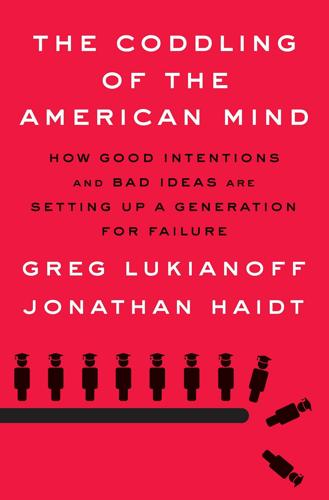
The Coddling of the American Mind: How Good Intentions and Bad Ideas Are Setting Up a Generation for Failure
by
Greg Lukianoff
and
Jonathan Haidt
Published 14 Jun 2018
Childhood vaccines make us healthier not by reducing threats in the world (“Ban germs in schools!”) but by exposing children to those threats in small doses, thereby giving children’s immune systems the opportunity to learn how to fend off similar threats in the future. This is the underlying rationale for what is called the hygiene hypothesis,9 the leading explanation for why allergy rates generally go up as countries get wealthier and cleaner—another example of a problem of progress. Developmental psychologist Alison Gopnik explains the hypothesis succinctly and does us the favor of linking it to our mission in this book: Thanks to hygiene, antibiotics and too little outdoor play, children don’t get exposed to microbes as they once did.
…
Students under pressure: College and university counseling centers are examining how best to serve the growing number of students seeking their services. Monitor on Psychology, 45, 36. Nozick, R. (1974). Anarchy, state, and utopia. New York, NY: Basic Books. Okada, H., Kuhn, C., Feillet, H., & Bach, J. (2010). The “hygiene hypothesis” for autoimmune and allergic diseases: An update. Clinical & Experimental Immunology, 160, 1–9. Ostrom, E. (1990). Governing the commons: The evolution of institutions for collective action. New York, NY: Cambridge University Press. Ostrom, V. (1997). The meaning of democracy and the vulnerability of democracies.
…
abuse, 25, 26, 175 Adam, 166 Adam Walsh Child Resource Center, 166 Adler, Eric, 198–99 adulthood, 148, 250, 257 Adverse Childhood Experiences (ACE), 175, 176 aggression, 40, 71 in girls versus boys, 155, 161 microaggressions, 40–46, 51, 71, 77, 145, 205, 210, 260 Albright, Madeleine, 48 Alexander, Larry, 107–8 Alexander, Michelle, 74 Algoe, Sara, 159 allergies, 21–22 peanut, 19–21, 23–24, 30, 164, 236, 237 American Academy of Pediatrics, 247 American Civil Liberties Union (ACLU), 92, 216 American Enterprise Institute, 87 American National Election Study, 129 America’s Most Wanted, 166 Antifa, 81, 83, 91 Antifragile (Taleb), 22–23, 164, 170 antifragility, 22–24, 28, 31, 146, 164, 176, 178, 193, 206, 237, 246 anxiety, 5, 12, 24, 30, 33–34, 125, 126, 157, 164 cognitive behavioral therapy and, 7–8, 29 cognitive distortions and, 7–8, 10, 158–59, 161 depression and, 158 in girls versus boys, 149–51, 160 overprotection and, 183 play deprivation and, 183 rates of, 149–51, 157–58, 160, 183, 185 safetyism and, 158 Aristotle, 253 art of association, 191–92, 194, 211 Ashworth, Kevin, 163 Atlantic, 42, 72, 95, 190 “The Coddling of the American Mind” (Lukianoff and Haidt), 10–12, 31, 37, 121, 145, 156, 205 Atomwaffen Division, 133 Axelrod, David, 96 Baby Boom generation, 110, 111, 167, 174 Baehr, Jason, 247–48 Balko, Radley, 74 Barrett, Lisa Feldman, 95 Beck, Aaron, 36–37 Beck, Glenn, 132 Bell Curve, The (Herrnstein and Murray), 87 Berenstain, Nora, 105 Bergen Community College, 201 Bergesen, Albert, 100–103, 105–7, 119 Berkeley, University of California at, 12, 81–87, 90, 94, 120 bias reporting systems, 204–6, 212 Big Sort, The: Why the Clustering of Like-Minded America Is Tearing Us Apart (Bishop), 130 Bilge, Sirma, 68 Bill of Rights, 222–23 Bishop, Bill, 130 Black Lives Matter (BLM), 75, 88, 133, 134 Black Swan, The (Taleb), 22 blaming, 38, 39, 278 Bloom, Paul, 218 Boethius, 34, 35 Bond, Sarah, 136–37 brain, 153, 181–84, 193, 194 Breitbart News, 81 Bridges, George, 115–17, 119, 198 Brookings Institution, 86 Brown, Stacy, 116, 118–19 Brown University, 26–28, 70, 259 Bruni, Frank, 190 Buddha, ix, 34, 35, 60, 95, 241 bullying, 25, 26, 246 call-out culture, 5, 10, 71–73, 77, 86, 158 Cambridge Analytica, 265 Campbell, Bradley, 209, 210 Carlson, Tucker, 118, 133, 134 Carter, Jimmy, 224 catastrophizing, 38, 50, 84–85, 89, 145, 190, 201, 212, 277 Center for Collegiate Mental Health, 156 Centers for Disease Control, 190 charitable interpretations, see principle of charity Charleston church shooting, 139 Charlottesville rally, 90–92, 94, 97, 139 Chicago Statement on Principles of Free Expression, 255–56, 268, 279–81 Chinese Cultural Revolution, 100–102 children academic and career pressures on, 174, 235, 236 adversity and, 175–76 books for, 172 cognitive behavioral techniques for, 241–42 community of, 239–40 conflict resolution and disagreement skills in, 191–92, 194, 211, 212, 240, 248, 258–60 democracy and, 191–94 and fear of strangers and abduction, 165–67, 178, 186, 194, 235, 238 mindfulness and, 242 phones and, see phones play and, see play school and, see school sleep and, 250 structured lives of, 188–89, 246 suggestions for, 235–51 summer camps for, 240 wisdom and, 235–51 year of service or work after high school, 250–51, 257 see also parenting Christakis, Erika, 56–57, 71, 102–3, 127, 165, 187, 188, 210–11, 240 Christakis, Nicholas, 56–57, 127 Chronicle of Higher Education, 208 Chua, Amy, 267 Ciccariello-Maher, George, 135 civil rights laws, 206, 207 civil rights movement, 60–61, 65, 67, 84, 216, 221, 222, 230 Claremont McKenna College (CMC), 53–55, 88–90, 102–3, 120, 134, 175 Clark, Jenna, 159 Clinton, Bill, 222, 224 coddling, use of word, 13–14 cognitive behavioral therapy (CBT), 3, 7–9, 14, 29, 51, 95, 144–45, 196, 259 Boethius and, 34–36 children and, 241–42 effectiveness of, 37 how to do, 275–78 as microaggression, 42 cognitive distortions, 7–10, 14, 36–40, 50, 84–85, 89, 144–45, 196–97, 212, 259 anxiety and, 7–8, 10, 158–59, 161 categories of, 37–38, 277–78 depression and, 7–8, 10, 36–37, 150, 158–59, 161 parenting and, 177–78 safetyism and, 177–78 see also emotional reasoning college campuses, see universities Collins, Patricia Hill, 68 Collins, Richard, III, 139 Columbia University, 6, 7, 40, 255 Coming Apart (Murray), 87 Common Core, 188 common-enemy identity politics, 62–67, 71–73, 76, 77, 89–90, 119–20, 244 common-humanity identity politics, 60–62, 74–76, 221, 244 Common Sense Media, 249 concept creep, 24–27, 31–32, 105, 150, 205 harassment and, 206–9 safety and, 24–25, 27, 259 trauma and, 25–26 violence and, 85–86 confirmation bias, 109, 131, 258, 259 conflict resolution and disagreement skills, 191–92, 194, 211, 212, 240, 248, 258–60 Congress, 131 Consolation of Philosophy, The (Boethius), 34, 35 Constitution, U.S., 222–23 Cooper, Harris, 185, 245 correlation: causation and, 227–29, 231–32 spurious, 152, 228 Coulter, Ann, 83 Crenshaw, Kimberlé Williams, 67–68, 71, 221 Crick, Nicki, 155 crime, 167, 186, 238, 266 criminal justice system, 74 critical thinking, 39, 113, 259 CYA (Cover Your Ass), 203, 211, 212 Daily Californian, 84 Dalai Lama, 267 Day of Absence, 114–15 Deaner, Robert, 225 debate clubs, 248 democracy, 66, 191–94, 222–23, 254 Democracy in America (Tocqueville), 195 Democrats, 129–31, 213, 216 see also politics Department of Education, 207 Department of Justice, 207 depression, 5, 12, 24, 30, 125, 126, 143, 157, 164, 250 activities correlated with, 152–53 anxiety and, 158 cognitive behavioral therapy and, 7–8 cognitive distortions and, 7–8, 10, 36–37, 150, 158–59, 161 first-person account of, 143–44 in girls versus boys, 149–51, 160 play deprivation and, 183 rates of, 149–50, 157–58, 160, 183, 185 safetyism and, 158 see also suicide Depression, Great, 130 Deresiewicz, William, 189 Diagnostic and Statistical Manual of Mental Disorders (DSM), 25 dichotomous thinking, 38, 39, 50, 85, 89, 145, 177, 277 dignity culture, 209–10 disconfirm, inability to, 278 disconfirmation, institutionalized, 109, 110, 229 discounting positives, 38, 177, 277 distributive justice, 217–21, 227, 230, 231 Dolezal, Rachel, 104 Dreger, Alice, 254–55 Drexel University, 135, 202 Duckworth, Angela, 190 Duke, Annie, 248–49 Durden, Lisa, 134–35 Durkheim, Emile, 100, 102, 103, 106–8, 113–15, 120 Eady, Trent, 73 Eagleman, David, 58 Ebner, Julia, 266–67 economy, 13, 152 education: purpose of, 254 see also school; universities emotional reactivity, 95–96 emotional reasoning, 3, 4, 33–51, 119, 177, 202, 208, 212, 241, 247, 259, 278 disinvitations of speakers and, 47–51 microaggressions and, 40–46 “see something, say something” and, 203–4 subjective standards and, 25–26 Enlightenment Now (Pinker), 264 Epictetus, 33, 34, 50 equality: absolute, 65 distributive justice and, 218 fairness and, 218 equal-outcomes social justice, 223–27, 230, 231 equity theory, 218–20, 226, 227, 231 Essex County College, 134–35 Evergreen State College, 114–21, 133, 198 EverydayFeminism.com, 44 Excellent Sheep (Deresiewicz), 189 exclusion, 246–47 experience-expectant development, 182–84 fairness, 217–18, 222 equity theory and, 218–20, 226, 227, 231 procedural justice and, 219 see also justice Fall of the Faculty, The: The Rise of the All-Administrative University and Why It Matters (Ginsberg), 198 Facebook, 49, 55, 105, 107, 130, 146–47, 207, 265 fascism, 86, 89, 92 FBI, 138, 166, 261 feminism, 49, 94, 104, 105, 107, 208 filter bubble, 130–31 First Amendment, 5, 64, 82, 116, 138, 200–201, 256 forbidden base rates, 229 fortune-telling, 89, 277 Foster, Karith, 44–45, 51, 55 Foucault, Michel, 69 Foundation for Individual Rights in Education (FIRE), 5, 47, 64, 74, 94, 135, 145, 200, 202, 204, 216, 255 Fox News, 118, 133–35 fragility, 2–4, 9, 14, 19–32, 119, 170, 171, 177, 196, 202, 212, 236, 258–59 antifragility, 22–24, 28, 31, 146, 164, 176, 178, 193, 206, 237, 246 see also safetyism Franklin, Benjamin, 269 Free-Range Kids movement, 164, 211, 238 free-range parenting bill, 266 free speech, 5–6, 31, 65, 84, 138, 200–203, 207, 212, 251 Chicago Statement on Principles of Free Expression, 255–56, 268, 279–81 First Amendment and, 5, 64, 82, 116, 138, 200–201, 256 free speech zones, 202–3 and responding to pressure campaigns and outrage, 256–57 speech codes, 207, 256 Friedersdorf, Conor, 72 From #BlackLivesMatter to Black Liberation (Taylor), 135 Galileo’s Middle Finger (Dreger), 254–55 Game of Thrones, 201 Gandhi, Mahatma, 98 gap year, 250–51, 257 Gastañaga, Claire Guthrie, 92 Gawker, 228 Gelman, Andrew, 213, 214 gender pronouns, 24–25 General Motors (GM), 67 Generation X, 167, 174, 184–85 Generation Z, see iGen genes, 182 Ghitza, Yair, 213, 214 Gibson, William, 9–10 Gingrich, Newt, 131 Ginsberg, Benjamin, 198 good people versus evil; us versus them, 3–4, 14, 53–77, 85, 90, 92, 119–20, 132, 177, 206, 243–44, 247, 259–60 see also groups Gopnik, Alison, 21, 24 Grant, Adam, 240 Gray, Hanna Holborn, 50, 51 Gray, Peter, 183–85, 190–91, 193–94, 238 Greatest Generation, 110 Greek statues, 136–37 Green, Melanie, 159 grit, 190 Grit (Duckworth), 190 Gross, Neil, 88 groups, 44, 57–59, 68, 70–71, 76, 100, 120 collective effervescence in, 100, 103 minimal group paradigm, 57–58 moral matrices and, 9, 10 self-segregation in, 130 solidarity in, 108–9 tribalism and, 57–59, 76, 130, 131, 153, 267 us versus them and good people versus evil, 3–4, 14, 53–77, 85, 90, 92, 119–20, 132, 177, 206, 243–44, 247, 259–60 see also identity politics groupthink, 73, 106, 108, 113, 131 Guinier, Lani, 222 Gulag Archipelago, The (Solzhenitsyn), ix, 243 Gunn, Tommy, 75 Haidt, Max, 19–20 Halloween costumes, 56, 102, 165 Hamid, Shadi, 42–43 Hampshire College, 135 Hannity, Sean, 132 Happiness Hypothesis, The (Haidt), 2, 35 harassment, concept creep and, 206–9 Harvard Law School, 205 Harvard University, 112, 253 Haslam, Nick, 25–26 hate crimes and speech, 86, 94, 126, 138–39 Haymarket riot, 201 Hennessy, Matthew, 49 Heterodox Academy, 248 Heyer, Heather, 91, 139 Heying, Heather, 116, 118 Higher Education Research Institute, 113 Hitler, Adolf, 63, 91 Hoffer, Eric, 99 Holder, Eric, 48 Holland, Stephen, 37 homework, 185–86, 245 honor cultures, 209 Horowitz, David, 83 Horwitz, Steven, 191–92, 211 How to Raise an Adult (Lythcott-Haims), 165 Huo, Yuen, 220 hygiene hypothesis, 21–22 Hypatia: A Journal of Feminist Philosophy, 104–5 Hyperallergic, 136 Identity Evropa, 136 identity politics, 59–67, 76, 259 common-enemy, 62–67, 71–73, 76, 77, 89–90, 119–20, 244 common-humanity, 60–62, 74–76, 221, 244 positive trends in, 266–67 schools and, 244 iGen, 146–51, 174–75, 178 anxiety and depression in, see anxiety; depression college and, 31, 145, 148, 156–59, 174–75, 185 play and, 185 politics and, 213, 214 safetyism and, 30–31, 156, 158, 161 iGen (Twenge), 30–31, 146–49, 152–54, 159 immune system, 21–22, 164 Importance of Being Little, The (Christakis), 165 “In Defense of Transracialism” (Tuvel), 104–7, 121 institutionalized disconfirmation, 109, 110, 229 intellectual humility, 244, 247 intellectual virtues, 247, 258 Intellectual Virtues Academy, 247–48 intent, 51, 86, 104–5 charitability in interpreting, 42, 51, 55, 243–44, 260 impact versus, 43–44, 46 microaggression theory and, 40–46, 51, 71, 77 internet, 237, 241 see also social media intersectionality, 67–69, 71, 76–77, 90 intimidation, 14, 81–98 intuitive justice, 217–21 distributive, 217–21, 227, 230, 231 procedural, 217, 219–22, 227, 230, 231 Islamist extremists, 266–67 Iyengar, Shanto, 130–32 Jacksonville State University, 202 Jandhyala, Pranav, 82 Jenner, Caitlyn, 104, 105, 205–6 Jennings, John, 82 Jensen, Mike, 205–6 Jews, 63, 90, 126 Jim Crow laws, 221 Johnson, Samuel, 269 Jones, Van, 96–98, 192, 259 judgment focus, 278 justice, 217–21, 223, 254 distributive, 217–21, 227, 230, 231 intuitive, 217–21 procedural, 217, 219–22, 227, 230, 231 see also social justice Kabat-Zinn, Jon, 242 Kaiser, Sandra, 133 Kerr, Clark, 197 kindergarten, 185, 187–88 King, Martin Luther, Jr., 60–62, 75, 76, 98 Kipnis, Laura, 208–10 Krupenkin, Masha, 130–32 Ku Klux Klan, 12, 90, 91, 207 Kuran, Timur, 267 labeling, 38, 39, 50, 89, 145, 150, 277 LaFreniere, Peter, 181 Lagarde, Christine, 48 language development, 182 Lareau, Annette, 173–75, 179, 235 Las Vegas shooting, 12 law education, 205 Leahy, Robert, 37, 241–42 LEAP (Learning Early About Peanut Allergy), 20–21 learned helplessness, 158 Let Grow, 164, 238–39 Licence, 238–39 Levitsky, Steven, 131 Lexington High School, 190 Lilla, Mark, 74–75 Limbaugh, Rush, 132 locus of control, 46, 70, 158 Louisiana State University (LSU), 199 Lythcott-Haims, Julie, 165, 169–70, 190 Macaulay, Thomas Babington, 265 Mac Donald, Heather, 88–89, 126 Maher, Bill, 48 Mandela, Nelson, 81, 98 Manning, Jason, 209, 210 Mao Zedong, 100–101 Marano, Hara Estroff, 170 Marcus Aurelius, 95 Marcuse, Herbert, 64–71 marriage equality, 61–62 Martínez Valdivia, Lucía, 93 Marx, Karl, 64, 254 Marxism, 64, 65 matrix, matrices, 9–10 May Day, 201 McChrystal, Stanley, 251 McElroy, Wendy, 26–28 McGinn, Lata, 37 McLaughlin and Associates, 86 McNally, Richard, 29 McNeese State University, 203 McWhorter, John, 86 media, 130–32, 137 Meng Tzu (Mencius), 19 mental health, 26, 140, 143–61, 266 of college students, 156–59 in girls versus boys, 149–51, 154–56, 160, 161 self-harming and, 151, 195–96 and social media and phones, 146–47, 152–56, 159–61, 265 see also anxiety; depression #MeToo Movement, 12, 27 microaggressions, 40–46, 51, 71, 77, 145, 205, 210, 260 Middlebury College, 12, 87–88, 90, 103, 127 Mill, John Stuart, 248 Millennials, 30, 31, 156, 160, 175, 178, 184–85, 188, 213 Milton, John, 34 mindfulness, 242 mind reading, 38, 41, 212, 277 Misoponos, 1–4, 14, 34, 50 moral dependency, 209–12 moral judgments, intent versus impact in, 43–44, 46 moral matrices, 9, 10, 58 moral values, 61–62 Morgan, Kathryn Pauly, 68–69 Murray, Charles, 87–88, 103, 127 Murray, Pauli, 61, 62, 75–76, 260 Nader, Ralph, 24 National Association of Social Workers, 220 National Center for Missing & Exploited Children, 166, 168 Nazis and neo-Nazis, 12, 63, 64, 90–92, 133, 139, 140 negative filtering, 38, 177, 277 negative partisanship, 131–32, 140 Neuromancer (Gibson), 9–10 New Jersey Transit, 203–4 New Jim Crow, The: Mass Incarceration in the Age of Colorblindness (Alexander), 74 New Left, 65, 67 New Republic, 6 Newsome, Hawk, 75–76 Newton, Isaac, 125 New York, 106 New Yorker, 205 New York Sun, 163 New York Times, 6, 26, 88, 92, 95, 127, 133, 190, 226 New York University (NYU), 204–5 Nietzsche, Friedrich, 2, 22 1960s, 213–14, 216, 230 No Child Left Behind, 188 Noonday Demon, The: An Atlas of Depression (Solomon), 143 Northern Michigan University, 200, 211 Northwestern University, 208 Notre Dame vs. the Klan: How the Fighting Irish Defeated the Ku Klux Klan (Tucker), 207 NW Anxiety Institute, 163 Oakton Community College, 201 Obama, Barack, 11, 96, 140, 214 Obama, Malia, 250 Oberlin College, 24–25 Occupy Wall Street, 129 Oliver, Kelly, 106–7 Olivia (Claremont student), 53–55, 175 Once and Future Liberal, The: After Identity Politics (Lilla), 74–75 On Liberty (Mill), 248 oppression, 6, 44, 46, 57, 64, 65, 68–71 Orlando nightclub shooting, 12 Ostrom, Elinor, 191 Ostrom, Vincent, 191, 192 Our Kids: The American Dream in Crisis (Putnam), 173–76 overgeneralizing, 38, 39, 50, 277 overprotection, 13 in parenting, 126, 148, 164, 165, 167–72, 183, 201–2, 235, 236, 266 see also fragility; parenting; safetyism overreaction, 201, 203 overregulation, 201–3 parenting, 125, 126, 163–79, 192 and actual versus imagined risk, 167–68 and arrest for neglect, 171–72, 266 and assuming capability in children, 237 and child’s walking to places alone, 169–70, 237–39 cognitive distortions and, 177–78 concerted cultivation style of, 173, 174, 176, 179, 235–36 free-range, 164, 211, 238, 266, 268 Let Grow License and, 238–39 natural growth style of, 174, 179 overprotective (helicopter), 126, 148, 164, 165, 167–72, 183, 201–2, 235, 236, 266 prepare the child for the road, not the road for the child, 23, 237–40 risk taking and, 238 school policies and, 245–49 social class and, 173–76, 179 societal pressures and, 171 suggestions for, 235–51 Parker, Sean, 147 Paros, Mike, 118 Patz, Etan, 165, 166 Paxson, Christina, 27 “Paying the Price for Breakdown of the Country’s Bourgeois Culture” (Wax and Alexander), 107–8, 121 peanut allergies, 19–21, 23–24, 30, 164, 236, 237 Peck, Don, 10 personalizing, 277 Pew Research Center, 128 phones, 30, 146, 147, 152–54, 159–61, 194, 214 and limiting device time, 249–50 school and, 247 see also social media Pinker, Steven, 264, 265 play, 125, 126, 178, 181–94 brain and, 181–84, 193 free, 183–86, 188, 189, 191, 193–94, 235–37, 245–46, 266 importance of, 181–83, 193–94 outdoor, 184, 186, 266 playgrounds, 183, 238 risk and, 183–85, 236, 238, 246 polarization, 121, 125–41, 251, 265 affective, 129, 131–32, 141 outrage and, 133–38, 261 police, attitudes toward, 219–20 political correctness, 46, 94–95, 202 Political Tribes: Group Instinct and the Fate of Nations (Chua), 267 politics, 213–14 alt-right, 81, 84, 118, 139, 266 bipartisanship in, 131 birth year and, 213–14 filter bubble and, 130–31 left-wing, 5, 110–13, 126–27, 132–38, 141, 199 negative partisanship in, 131–32 from 1940s to 1980, 130 right-wing, 5, 63, 110–13, 118, 126, 127, 132–38, 141 universities and, 110–13, 121, 126–27, 132–38, 141, 199, 258 see also polarization Pomona College, 89–90 positives, discounting, 38, 177, 277 post-traumatic stress disorder (PTSD), 25, 28–29 power, 53, 66 intersectionality and, 68 prejudice, 25, 40–44, 46 see also racism Princeton Review, 189 principle of charity, 42, 51, 55, 243–44, 260 privilege, 68–71 problems of progress, 13–14, 170, 264 procedural justice, 217, 219–22, 227, 230, 231 professors: political perspectives of, 110–13, 121, 258 retraction demands and, 103–4, 107–8, 121 social media and, 137, 141, 201 trust between students and, 205–6, 212 viewpoint solidarity and diversity among, 108–13, 121, 258 proportionality, 217–19, 224, 227 proportional-procedural social justice, 220–23, 231 Putnam, Robert, 173–76, 236 racism, 6, 42, 44–45, 64, 71, 140 civil rights movement and, 60–61 Halloween costumes and, 56, 102, 165 intimidation and threats, 138–40 Jim Crow laws, 221 white supremacists, 12, 86, 87, 89–91, 94 Rage, The: The Vicious Circle of Islamist and Far Right Extremism (Ebner), 266–67 rape culture, 26–28 rape law, teaching of, 205 Rational Optimist, The (Ridley), 264–65 Rauch, Jonathan, 59, 267 Rawls, John, 213 Redelsheimer, Katrina, 82 Reed College, 93, 127 regret orientation, 278 religion: American civil, 60–61 rituals in, 100 Renaissance, 136 “Repressive Tolerance” (Marcuse), 65–67 Republicans, 129–31, 213, 216 see also politics rider-and-elephant metaphor, 35, 36, 51, 62 Ridley, Matt, 264–65 Righteous Mind, The: Why Good People Are Divided by Politics and Religion (Haidt), 9 Right on Crime, 74 Rise of the Warrior Cop: The Militarization of America’s Police Forces (Balko), 74 risk, 185, 237 actual versus imagined, 167–68 play and, 183–85, 236, 238, 246 see also safety rituals, 100 Roberts, John, 192–93 Roman statues, 136–37 Roof, Dylann, 139 Roosevelt, Franklin D., 74 Sacks, Jonathan, 53, 64 safety, 6–7, 9, 14, 24–25, 29–30, 96, 148 and actual versus imagined risk, 167–68 crime and, 167, 186, 238, 266 improvements in child safety, 168–69 meaning of, and concept creep, 24–25, 27, 246–47, 259 threats and, 138–40, 260–61 safetyism, 29–30, 85, 104, 121, 125, 164, 165, 194, 203, 246–47 on campus, 12, 24–26, 96–97, 125, 145–46, 148, 195–212, 268 cognitive distortions and, 177–78 dangers of, 168–71 exclusion and, 246–47 iGen and, 30–31, 156, 158, 161 overprotective parenting, 126, 148, 164, 165, 167–72 rise of, 24–26, 121 safe spaces, 26–31, 96, 145, 210, 259 school and, 236 trigger warnings, 6–7, 24, 28, 29, 31, 145, 210 Salem witch hunts, 99–100 San Bernardino attack, 12 Sanders, Bernie, 213 Savio, Mario, 84 schemas, 36–38, 57, 150, 177 Schill, Michael, 92 school (K–12), 59, 185–89, 194 college admissions and, 189–91, 194, 235, 236, 257–58, 268 debate teaching in, 248 discussions on coursework in, 248 first-grade readiness checklists, 186–87, 238 grades in, 190 homework, 185–86, 245 ideas for elementary schools, 245–47 ideas for middle schools and high schools, 247–49 identity politics and, 244 influencing policies at, 245–49 kindergarten, 185, 187–88 phones at, 247 recess at, 245–47 safetyism and, 236 year of service or work between high school and college, 250–51, 257 Schulz, Kathryn, 244 “see something, say something,” 203–4 Seligman, Martin, 158 September 11, 2001, attacks, 200, 203 Service Year Alliance, 251 sexism, 6, 44, 71 sexual misconduct and assault, 27 law education and, 205 #MeToo Movement and, 12, 27 Shakespeare, William, 34 Shapiro, Ben, 83 Sheskin, Mark, 218 shoulds, 277 Shuchman, Daniel, 238 Shulevitz, Judith, 26–28 Silverglate, Harvey, 74 Simmons, Ruth, 259 Singal, Jesse, 106 Skenazy, Lenore, 163–65, 169, 171, 172, 177, 185, 211, 238 sleep, 250 smartphones, see phones Smith College, 72 snowballs, and danger, 236 social class: parenting and, 173–76, 179 universities and, 174, 176 social justice, 111, 125, 126, 213–32 and correlation as causation, 227–29, 231–32 definition and use of term, 217, 220–21, 223 equal-outcomes, 223–27, 230, 231 major news stories related to, 214–16 proportional-procedural, 220–23, 231 social media, 5, 10, 30, 130, 133, 139, 145, 194, 203, 259 call-out culture and, 71–73 curation and comparisons in, 154–55, 161 Facebook, 49, 55, 105, 107, 130, 146–47, 207, 265 impact on girls, 154–56 and limiting device time, 249–50 mental health and, 146–47, 152–56, 159–61, 265 positive trends in, 265–66 professors and, 137, 141, 201 Twitter, 81, 130, 135–37, 147, 265 virtue signaling and, 73 Socrates, 49, 50 Solomon, Andrew, 143 Solzhenitsyn, Aleksandr, ix, 243 Soviet Union, 130, 243 Spellman, Mary, 54–55, 57, 71, 102–3, 105–6, 134 Spencer, Richard, 139 Spock, Benjamin, 174 sports, 152, 189, 225–26 Title IX and, 224–25 spurious correlations, 152, 228 Stalin, Joseph, 243 Stanger, Allison, 87–88, 103, 127, 140 Starmans, Christina, 218 statues, Greco-Roman, 136–37 “sticks and stones” saying, 210 Stoicism, 95–96, 98 Stone, Geoffrey, 255, 279 Student Nonviolent Coordinating Committee, 84 Sue, Derald Wing, 40–42 suicide, 5, 24, 30, 143–44, 152 academic competition and, 190 rates of, 150–51, 160, 183, 190 sharing thoughts of, 195–96 Suk Gersen, Jeannie, 205 summer camps, 240 Supreme Court, 61 Tajfel, Henri, 57–58, 76 Taleb, Nassim Nicholas, 22–23, 28, 164, 170 Tannen, Deborah, 154 Taylor, Keeanga-Yamahtta, 135–36 Tea Party, 129 telos, 253–55 Tenbrink, Tyler, 139 terrorism, 11–12, 204 September 11, 2001, attacks, 200, 203 Tetlock, Phil, 229 Texas State University, 63–64, 67 Theodoric, 34 Theory of Justice, A (Rawls), 213 Thinking in Bets: Making Smarter Decisions When You Don’t Have All the Facts (Duke), 248–49 threats, 138–40, 260–61 Three Felonies a Day: How the Feds Target the Innocent (Silverglate), 74 Thucydides, 108–9 Title IX, 206–8, 223–25 Tocqueville, Alexis de, 191, 195 tolerance, 65–66 transgenderism, 104–5, 205–6 transracialism, 104 trauma, 25–26, 28–29, 31–32, 33 PTSD, 25, 28–29 Treatment Plans and Interventions for Depression and Anxiety Disorders (Leahy, Holland, and McGinn), 37 tribalism, 57–59, 76, 130, 131, 153, 267 see also groups trigger warnings, 6–7, 24, 28, 29, 31, 145, 210 Trump, Donald, 12, 82–83, 87, 96, 112, 114, 127, 135, 139, 140 Charlottesville and, 91, 94 supporters of, 75–76, 81, 83 truth, 253–55, 268 Tucker Carlson Tonight, 118, 133, 134 Turning Point USA (TPUSA), 138 Tuvel, Rebecca, 104–7, 121, 127 Twenge, Jean, 30–31, 146–49, 152–54, 159, 160, 164, 185 Twitter, 81, 130, 135–37, 147, 265 Tyler, Tom, 219–20 Tyranny of the Majority, The (Guinier), 222 UCLA, 92 Unequal Childhoods: Class, Race, and Family Life (Lareau), 173–75 unfair comparisons, 278 universities, 5, 8, 10, 11, 59, 125–26, 214 admissions to, 189–91, 194, 235, 236, 257–58, 268 amenities at, 199, 211 bureaucracy at, 125, 126, 192, 194, 195–212 canon wars at, 7 Chicago Statement and, 255–56, 268, 279–81 consumerist mentality at, 198–200, 211 corporatization of, 197–98, 211 cross-partisan events at, 261 distorted thinking modeled by administrators at, 200–203 diversity among professors in, 108–13, 121, 258 diversity among students in, 43, 258, 260 expansion of, 197–98 freedom of inquiry at, 255–57 free speech at, 5–6, 31, 65, 84, 200–203 heckler’s veto and, 257 iGen and, 31, 145, 148, 156–59, 174–75, 185 intellectual virtues and, 258 intimidation and violence at, 81–98 mental health and, 156–59 as multiversities, 197, 253 political orientation and, 110–13, 121, 126–27, 132–38, 141, 199, 258 preparation for life following, 8–9 productive disagreement in, 258–60 regulations at, 192, 200–203, 211–12 and responding to pressure campaigns and outrage, 256–57 retraction demands at, 103–4, 107–8, 121 safe spaces and, 26–31, 96, 145, 210, 259 safetyism at, 12, 24–26, 96–97, 125, 145–46, 148, 195–212, 268; see also safetyism school spirit at, 260 social class and, 174, 176 speakers at, 6, 27, 47–51, 87, 199 suggestions for, 253–62 trigger warnings and, 6–7, 24, 28, 29, 31, 145, 210 trust between professors and students at, 205–6, 212 truth and, 253–55, 268 wisdom and, 253–62 University of California, 197 Berkeley, 12, 81–87, 90, 94, 120 Los Angeles, 92 University of Central Florida, 207 University of Chicago, 119, 251, 253, 268 Chicago Statement on Principles of Free Expression, 255–56, 268, 279–81 University of Cincinnati, 203 University of Connecticut, 202 University of Iowa, 136–37 University of Michigan, 184, 207 University of Missouri, 11 University of Northern Colorado, 205–6 University of Oregon, 92 University of Pennsylvania, 107, 108 University of Virginia, 12, 188, 223–27 University of West Alabama, 202 Unsafe at Any Speed (Nader), 24 us versus them; good people versus evil, 3–4, 14, 53–77, 85, 90, 92, 119–20, 132, 177, 206, 243–44, 247, 259–60 see also groups vaccination, 21 Valenti, Jessica, 26–27 Venker, Suzanne, 49 victimhood culture, 209–10 victimization, 41–42, 46, 57, 126 viewpoint diversity, 11, 109, 112–13, 121, 248, 258 vindictive protectiveness, 10, 235 violence, 81–98 definition of, 85–86 words as, 84–86, 89, 94–98, 145, 158 Virginia Rowing Association, 223 virtue signaling, 73 vulnerability, culture of, 209, 210 see also fragility Wall Street Journal, 222 Walsh, Adam, 165–66 Walsh, John, 166 Ward, Douglas Turner, 114 War on Cops, The (Mac Donald), 88 Washington Post, 93, 199 Wax, Amy, 107–8, 121, 126 Weinstein, Bret, 114–19, 127, 133 “what if” questions, 278 Where You Go Is Not Who You Will Be: An Antidote to the College Admissions Mania (Bruni), 190 white genocide, 135, 136 white nationalists and white supremacists, 12, 86, 87, 89–91, 94, 135, 136, 139, 140, 266 Will, George, 48 William & Mary, 92 Williams College, 49–50 Wilson, E.
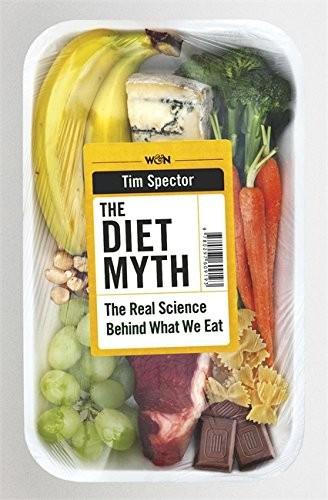
The Diet Myth: The Real Science Behind What We Eat
by
Tim Spector
Published 13 May 2015
A study recently found that babies who had their rubber dummies sucked clean by a parent then popped back into their mouths had considerably fewer allergies than those with parents dutifully replacing hygienic sterile dummies.12 The old-fashioned practice of mothers pre-chewing their baby’s food, which is rare in the West nowadays, served both to break down tough starchy foods and meats and to transmit a wide range of helpful microbes via saliva. Licking babies is common in most mammals and in some human cultures, and of course kissing is pretty universal. The Hygiene Hypothesis is an idea you may have heard of. It was developed by a colleague I trained with in epidemiology, David Strachan, whose interest was sparked when he was looking at the national data of children followed up from birth for asthma and eczema. He found a correlation between damp housing conditions and allergy in the UK.13 But the link was not what we might intuitively have expected: the damp, poor conditions and overcrowded families were actually protective, even after adjusting for other possible sources of bias.
…
All kids are raised communally and taught to walk and milk cows in dusty barns full of hay, straw, animal hair and manure. The workers that do most of the farming possess the most diverse sets of gut microbes, with large amounts of some species like Prevotella which, as we have seen, are rare in the rest of America but common in Africa.15 The Hygiene Hypothesis has stood the test of time so far, but now has to be adapted to our new knowledge of the importance of microbes. We need to remember that our gut microbes play a key role in training our immune systems. They do this via communication with the Treg cells in the gut walls, which are the main communicators and thermostats between what we eat and how our immune systems react.16 High Treg levels are generally healthy as they suppress the immune system.
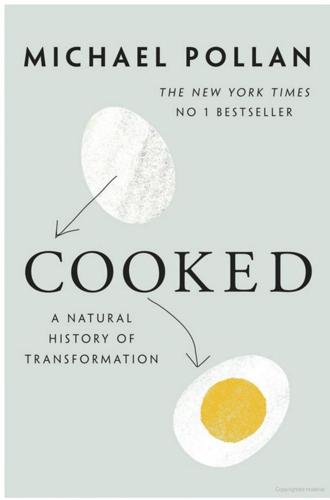
Cooked: A Natural History of Transformation
by
Michael Pollan
Published 22 Apr 2013
Some researchers believe this could help explain the higher rates of allergies, asthma, and obesity observed in children born by Cesarean. The sanitized environment in which we try to surround our children is probably also taking its toll on their microbiota. Now widely accepted, the “hygiene hypothesis” holds that children need to be exposed to more bacteria, not fewer, in order to properly develop their immune system, so that it can learn to accurately distinguish between good and bad microbes. Without that training, the theory goes, the body is apt to mistake benign proteins, such as those in certain foods, for mortal threats, and react accordingly.
…
Also, the cleanliness of dairying has only gotten worse under the regime of pasteurization; since dairy farmers know their milk will be sterilized after it leaves the farm and gets mixed with milk from countless other farms, they have less incentive to be scrupulous about hygiene. Nowadays, the post-Pasteurians can cite in their support the hygiene hypothesis. This is perhaps their most devastating argument, though it, too, has unacknowledged weaknesses. According to the argument, the problem is not so much with the bacteria in the milk, which they’re prepared to concede, but with the compromised immune systems of us milk drinkers—compromised (need it be said?)
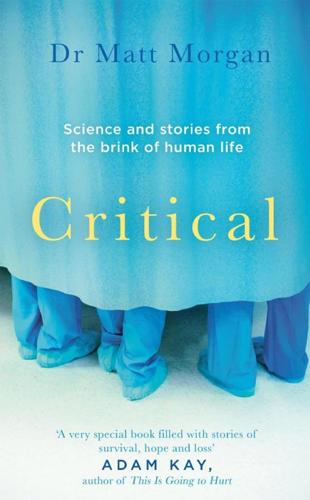
Critical: Science and Stories From the Brink of Human Life
by
Matt Morgan
Published 29 May 2019
Horror Autotoxicus and Other Concepts of Paul Ehrlich. JAMA 176, 50–51 (1961). ‘Most notably, the immunologist David Strachan published his “clean hypothesis” in 1989, and this has since formed a guiding principle in applied research.’ Strachan, D. P. Family size, infection and atopy: the first decade of the ‘hygiene hypothesis’. Thorax 55, S2–S10 (2000). 3: SKIN AND BONES ‘In total, the hospital cared for twenty-eight patients, many benefiting from the breakthrough “spray-on skin” developed by the pioneering surgeon, Fiona Wood.’ Wood, F. M., Stoner, M. L., Fowler, B. V. & Fear, M. W. The use of a non-cultured autologous cell suspension and Integra dermal regeneration template to repair full-thickness skin wounds in a porcine model: a one-step process.
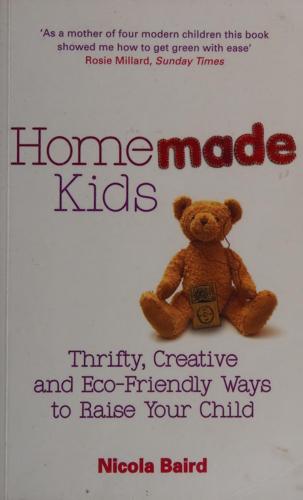
Homemade Kids: Thrifty, Creative and Eco-Friendly Ways to Raise Your Child
by
Nicola Baird
Published 14 Sep 2010
Also have a look at: 258 gossip Resources O Most recent Facebook sites (check the groups) O) Treehugger, an online community for green jobs, guides, etc., at www.treehugger.com O) The Green Parent magazine at www.greenparent.co.uk for articles, lots of discussion and the opportunity to track down other green mums on the meet-up page O Juno magazine at www.junomagazine.com, which focuses on eco-conscious parenting O) Babycentre at www.babycentre.com O) Nappyvalley at www.nappyvalley.co.uk, an online market for selling nearly new items O The NCT email list — or join a tea group of the National Childbirth Trust at www.nctpregnancyandbabycare.org.uk Useful books There are some very good natural remedy recipes in James Wong’s Grow Your Own Drugs (Collins, 2009), or search the internet for precise instructions. 7: Sleeping, Baths and No-Fee Babysitting Baths Find out more about the hygiene hypothesis at www.hygienehypothesis.com. For a fascinating book which charts the pregnancy of campaigner Sandra Steingraber’s baby see Having Faith: An Ecologist’s Journey to Motherhood (Berkley, 2001). It covers the issue of exposure to toxic chemicals both inside and 259 Homemade Kids - outside the womb, and helps make it clear that it’s not just the dose of poison that can be a problem to a foetus or child, it’s the timing.
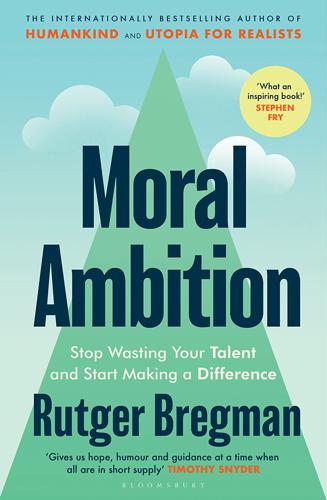
Moral Ambition: Stop Wasting Your Talent and Start Making a Difference
by
Bregman, Rutger
Published 9 Mar 2025
See: ‘Directive (eu) 2020/2184 of the European Parliament and of the Council of 16 December 2020 on the quality of water intended for human consumption (recast) (Text with eea relevance)’, eur-Lex (23 December 2020); Anthony Higney, Nick Hanley, and Mirko Moro, ‘The Lead-crime Hypothesis: A Meta-analysis’, Regional Science and Urban Economics, Vol. 97, Issue 1 (November 2022). 59 Ewan Eadie et al., ‘Far-uvc (222 nm) Efficiently Inactivates an Airborne Pathogen in a Room-sized Chamber’, Scientific Reports, Vol. 12, Issue 4373 (2022). Some scientists have pointed out there could also be too little exposure to germs, especially in early childhood, due to increased hygiene, which could mean a weaker immune system. The hygiene hypothesis was coined in 1989 by immunologist David Strachan to explain the rise in asthma, eczema, allergies, and autoimmune diseases. Recent research, however, points in another direction. Large studies in Denmark, Finland, and the UK showed no connection between the incidence of childhood infections and the incidence of allergies (on the contrary, a greater number of viral infections seemed to raise the risk of asthma).
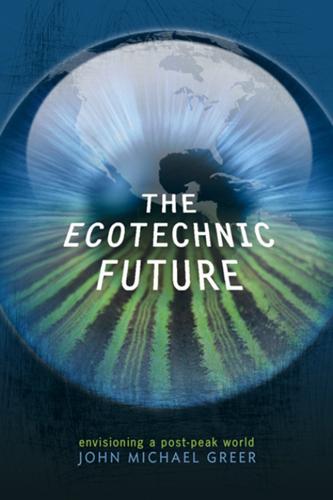
The Ecotechnic Future: Envisioning a Post-Peak World
by
John Michael Greer
Published 30 Sep 2009
: The Gardener’s Guide to Compost, Storey Publishing, 1990, one of the standard handbooks, is my source for much of this section. 7. See Joseph Jenkins, The Humanure Handbook: A Guide to Composting Human Manure, Chelsea Green, 1999. 8. Carol Steinfeld, Liquid Gold: The Lore and Logic of Using Urine to Grow Plants, Ecowaters, 2007. 9. The “hygiene hypothesis” remains controversial but is supported by epidemiological evidence. See David Strachan, “Hay fever, hygiene, and household size,” British Medical Journal 299 (1989), pp. 1259–1260. 10. See Stu Campbell, The Mulch Book: A Complete Guide for Gardeners, Storey Publishing, 1991. 11. Recent disputes around the ethics of eating animal foods are complex and, in my view, badly in need of clear reasoning — enough so that limits of space do not permit a detailed discussion here.
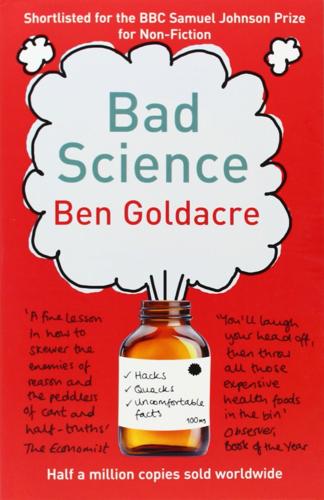
Bad Science
by
Ben Goldacre
Published 1 Jan 2008
The Times, for example, covered an experiment which showed that having younger siblings was associated with a lower incidence of multiple sclerosis. MS is caused by the immune system turning on the body. ‘This is more likely to happen if a child at a key stage of development is not exposed to infections from younger siblings, says the study.’ That’s what The Times said. But it’s wrong. That’s the ‘hygiene hypothesis’, that’s the theory, the framework into which the evidence might fit, but it’s not what the study showed: the study just found that having younger siblings seemed to be somewhat protective against MS. It didn’t say what the mechanism was, it couldn’t say why there was a relationship, such as whether it happened through greater exposure to infections.
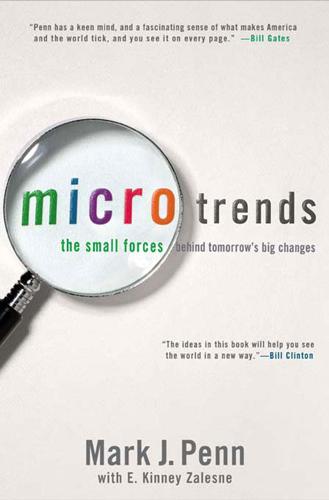
Microtrends: The Small Forces Behind Tomorrow's Big Changes
by
Mark Penn
and
E. Kinney Zalesne
Published 5 Sep 2007
(If Alexander Fleming hadn’t been sloppy enough to leave dirty Petri dishes lying around his desk, he would never have discovered penicillin.) They even said that messy people make better parents—focused as they are on warmth and hominess, rather than stacked-up toys and ring-free coffee tables. They even hinted that clean is killing us. Doctors are now starting to credit the “hygiene hypothesis”—the idea that the sharp rise in childhood asthma and allergies today is attributable to the lack of exposure to certain germs. Chlorine bleach, which erases all mistakes one can make in clothing, is said to poison hundreds of kids a year, and may be linked to breast cancer in women and reproductive problems in men.
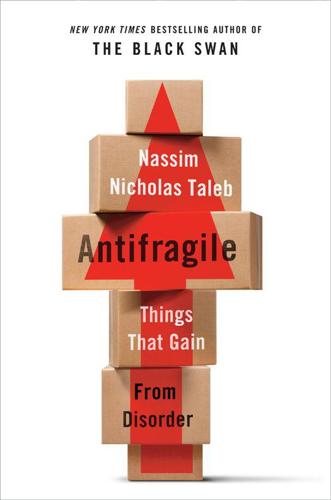
Antifragile: Things That Gain From Disorder
by
Nassim Nicholas Taleb
Published 27 Nov 2012
Grob, Gerald N., 2002, The Deadly Truth: A History of Disease in America. Cambridge, Mass.: Harvard University Press. Guadalupe-Grau, A., T. Fuentes, B. Guerra, and J. Calbet, 2009, “Exercise and Bone Mass in Adults.” Sports Medicine 39(6): 439–468. Guarner, F., R. Bourdet-Sicard, et al., 2006, “Mechanisms of Disease: the Hygiene Hypothesis Revisited.” Nature Clinical Practice Gastroenterology & Hepatology 3(5): 275–284. Guidone, C., et al., 2006, “Mechanisms of Recovery from Type 2 Diabetes After Malabsorptive Bariatric Surgery.” Diabetes 55: 2025–2031. Hacking, Ian, 1984, The Emergence of Probability: A Philosophical Study of Early Ideas About Probability, Induction and Statistical Inference.